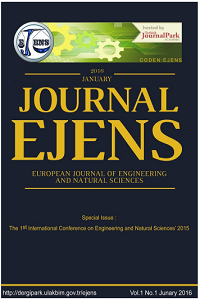Prediction of Dam Reservoir Volume Fluctuations Using Adaptive Neuro Fuzzy Approach
Prediction of Dam Reservoir Volume Fluctuations Using Adaptive Neuro Fuzzy Approach
Prediction,
___
- [1]. J.S.R. Jang, C.T. Sun, and E. Mizutani, Neurofuzzy and Soft Computing, A Computa-tional Approach to Learning and Machine Intelligence. Prentice-Hall, New Jersey, 1997.
- [2]. E.H. Mamdani, and S. Assilian, “An experiment in linguistic synthesis with a fuzzy logic controller”, International Journal of Man Machine Studies, 7, 1–13, 1975.
- [3]. T. Takagi, and M. Sugeno, “Fuzzy identification of systems and its application to modeling and control”, IEEE Transactions on System, Man and Cybernetics, 15, 116–132, 1985.
- [4]. M.E. Keskin, O. Terzi, and D. Taylan, “Fuzzy logic model approaches to daily pan evaporation estimation in Western Turkey”, Hydrological Sciences Journal, 49, 1001–1010, 2004.
- [5]. M.H. Kazeminezhad, A. Etemad-shahidi, and S.J. Mousavi, “Application of fuzzy inference system in the prediction of wave parameters”, Ocean Engineering, 32, 1709–1725, 2005.
- [6]. O. Kisi, “Daily pan evaporation modeling using a neuro-fuzzy computing technique”, Journal of Hydrology , 329, 636–646, 2006.
- [7]. O. Kisi, and O. Ozturk, “Adaptive neurofuzzy computing technique for evapo-transpiration estimation”, Journal of Irrigation and Drainage Engineering, 133, 368–379 , 2007.
- [8]. M.. Demirci, and A. Baltacı, ”Prediction of suspended sediment in river using fuzzy logic and multilinear regression approaches”, Neural Computing and Applications, 23,145-151, 2013.
- [9]. F. Üneş, “Dam reservoir level modelıng by neural network approach. A case study”, Neural Network World, 4, 461-474, 2010a.
- [10]. F. Üneş, ”Prediction of density flow plunging depth in dam reservoir: An artificial neural network approach”, Clean - Soil, Air, Water, 38, 296 – 308, 2010b.
- [11]. F. Üneş, M. Demirci, and Ö. Kişi, “Prediction of millers ferry dam reservoir level in usa using artificial neural network”, Periodica Polytechnica Civil Engineering, 59, 309–318,2015a,.
- [12]. F. Üneş, and M. Demirci, “Generalized Regression Neural Networks For Reservoir Level Modeling”, International Journal of Advanced Computational Engineering and Networking , 3, 81-84, 2015b.
- [13]. J. Shiri, and O. Kisi, “Comparison of genetic programming with neuro-fuzzy systems for predicting short-term water table depth fluctuations”, Computers & Geosciences, 37, 1692-1701, 2011.
- Başlangıç: 2015
- Yayıncı: CNR Çevre
Comparison of Performance of Conventional Membrane Bioreactor with Dynamic Membrane Bioreactor
Investigation and Evaluation of Degradability of Ibuprofen from Wastewater by Using Fenton Process
Effect of High Dosage Air-Entraining Admixture Usage on Micro Concrete Properties
Preparation and Stability Analysis of Water Based Al2O3, TiO2 and ZnO Nanofluids
Determination of Priority Contamination Factors in Lake of Manyas (Bird Paradise)
Research on Retinal and Iris Identification Systems
PSIM Simulation of Flyback Converter for P&O and IC MPPT Algorithms
